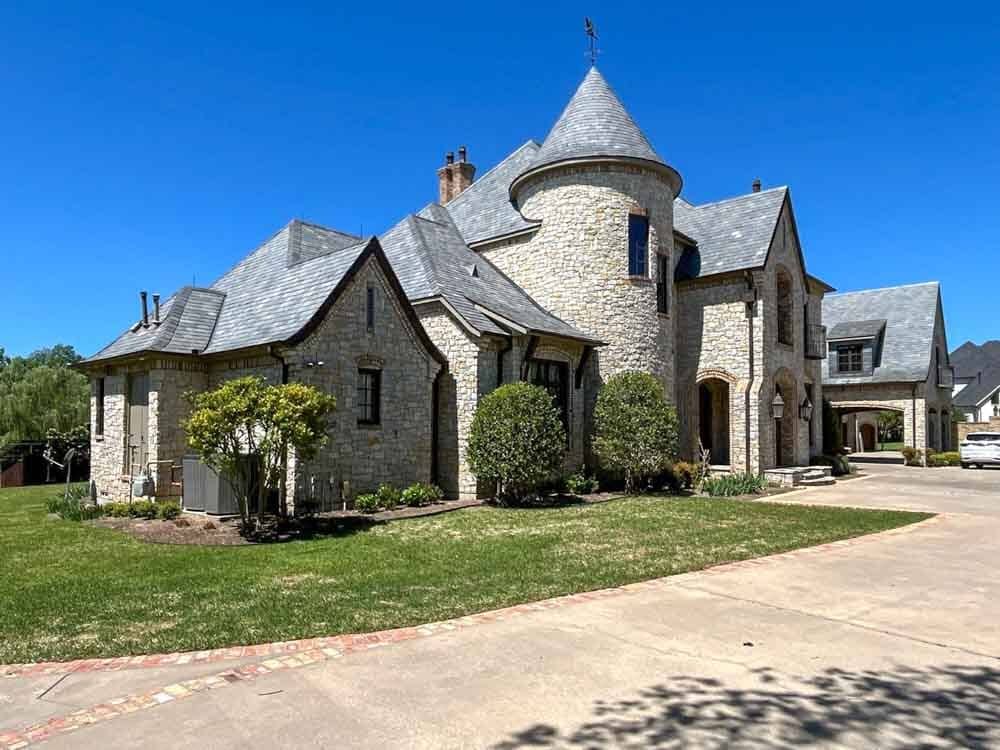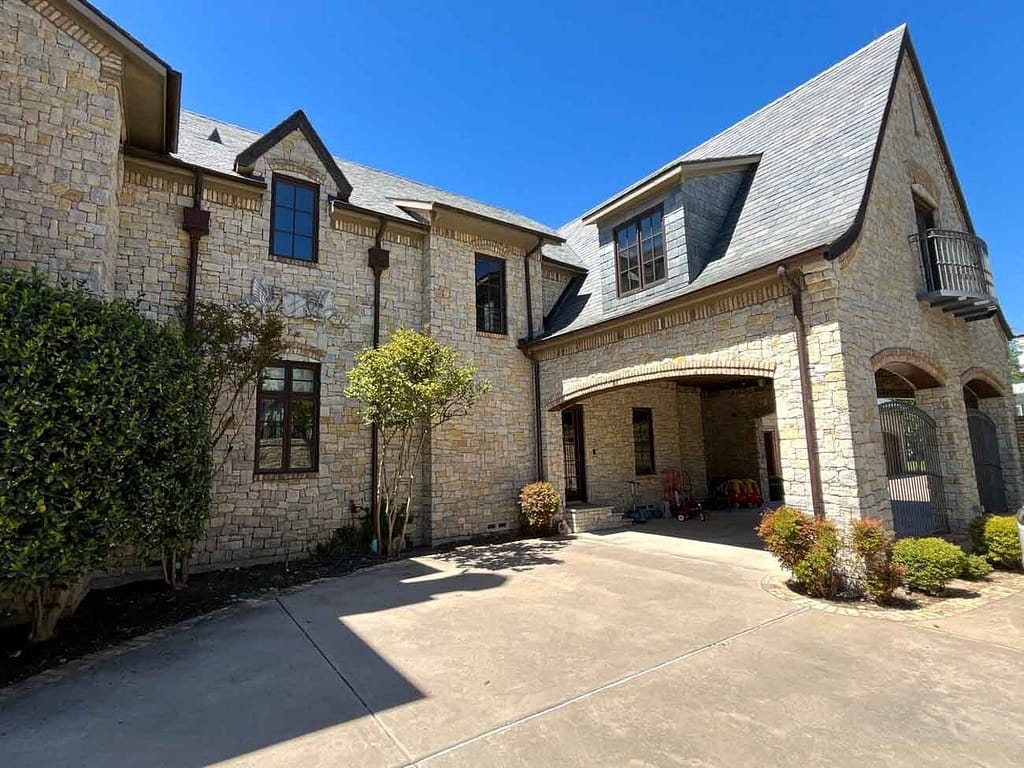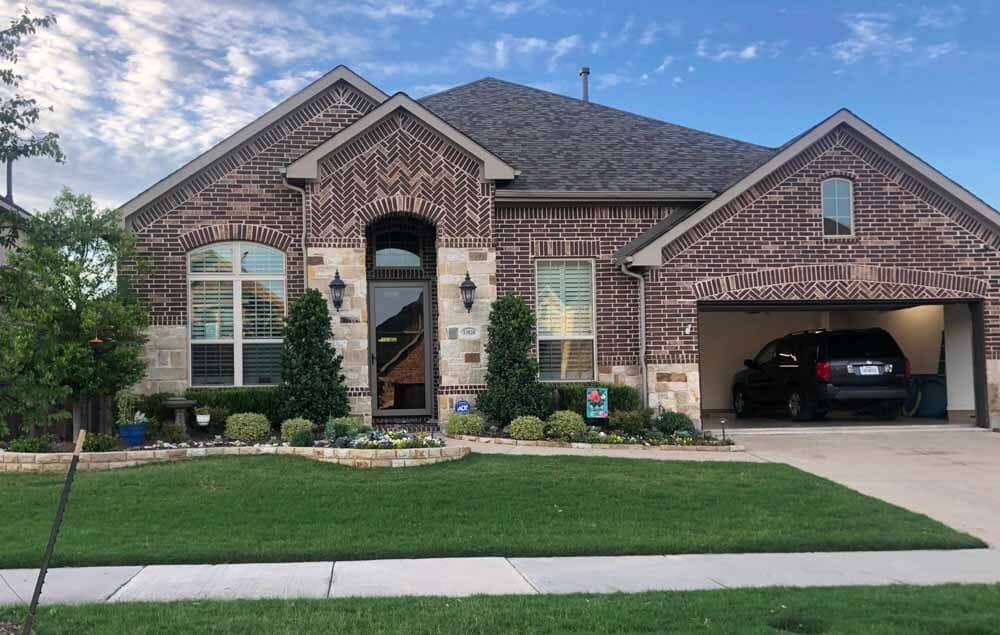
The three main types of roofing are hip, gable, and flat roofs. Each offers unique features: hip roofs provide stability, gable roofs offer simplicity, and flat roofs deliver modern versatility. Choosing the right design depends on your home’s style, climate, and needs.
Find out which roof design is ideal for your property with expert insights GFE Roofing, your Texas Roofing Contractor
Table of contents
1. Hip Roofs: Stability and Sophistication
A hip roof is defined by its slopes on all four sides, creating a uniform appearance that makes it one of the most stable roof types. Unlike other roof designs, a hip roof has no vertical sides, offering a sleek and balanced look. The meeting point where two slopes join is known as the “hip.” This roof design is popular in areas with high winds or heavy snowfall due to its resilience and ability to shed water effectively.
Common Types of Hip Roofs:
– Regular Hip Roof:
This is the standard design, featuring four triangular sides—two longer and two shorter—that converge at a ridge. While it offers a cohesive look, it tends to have smaller attic spaces, making it ideal for those who don’t require extensive storage.
– Half-Hip Roof:
A combination of a gable and a hip roof, the half-hip design slopes partway down like a gable before transitioning into a hip shape. This hybrid design allows for better ventilation and can create a more modern look, making it a popular choice in contemporary architecture.
– Cross-Hip Roof:
Designed for L-shaped buildings, a cross-hip roof involves two intersecting hip roofs that join at a valley. This style is particularly effective for homes with complex layouts, as it can accommodate various architectural angles and create a distinctive appearance.

Advantages of Hip Roofs:
– Wind Resistance:
The aerodynamics of a hip roof make it ideal for areas prone to strong winds, providing enhanced structural stability.
– Wrap Around Gutters:
Hip roofs can support wraparound gutters, offering a streamlined way to manage rainwater runoff.
– Enhanced Ventilation:
The design allows for better air circulation, which can help regulate temperature and reduce moisture buildup.
– Efficient Water Drainage:
The sloping sides facilitate quick drainage, minimizing the risk of water damage.
Hip roofs are versatile and can complement a variety of home styles. To determine if a hip roof is right for your property, consult with a qualified roofing contractor.
2. Gable Roofs: Simplicity and Functionality
Gable roofs, one of the most classic type of roof designs, feature two sloping sides that meet at a ridge, creating triangular extensions known as gables. This design is recognizable for its simple, symmetrical appearance, which makes it a popular choice for residential homes across the country. Gable roofs are especially suitable for areas with moderate climates, offering efficient water and snow runoff.
Common Types of Gable Roofs:
- Front Gable: The gable faces the front of the house, typically with the main entrance situated underneath. This design emphasizes the home’s facade, making it a focal point in traditional architecture.
– Side Gable:
In this variation, the sloping sides face the front and back of the house, while the gable is on the sides. This allows the main door to be positioned under the longer side of the roof, offering a clean, understated look.
– Cross Gable:
The cross-gable design involves two gable roofs that intersect at a right angle. This design is great for homes with wings or complex layouts, as it can highlight different sections of the building and add architectural interest.

Advantages of Gable Roofs:
– Ease of Construction:
Due to their straightforward design, gable roofs are relatively simple and quick to build, which can reduce labor costs.
– Ample Attic Space:
The steep slope of a gable roof creates a large attic space, ideal for storage or even conversion into living space.
– Cost-Effectiveness:
Gable roofs are typically more affordable than complex designs, making them a budget-friendly option for many homeowners.
– Efficient Water and Snow Shedding:
The steep angles facilitate fast drainage, reducing the likelihood of leaks and damage.
Gable roofs are a timeless choice that suits many different home styles. For homeowners seeking a balance between function and aesthetic appeal, a gable roof is a solid option.
3. Flat Roofs: Modern Design and Versatility
Flat roofs, characterized by their low pitch, have a nearly horizontal appearance, making them distinct from other roof types. A slight slope is necessary to ensure proper water drainage, but otherwise, the roof appears level. Flat roofs are a popular choice for commercial buildings but are increasingly being used in modern residential designs due to their contemporary look and functional advantages.
Common Types of Flat Roofs:
– Membrane Roofs:
These roofs use a continuous sheet of material, such as EPDM (rubber), PVC, or TPO. The membrane is either glued or held in place with weights. Membrane roofs are known for their durability and resistance to harsh weather conditions.
– Built-Up Roofs (BUR):
A BUR consists of alternating layers of asphalt, tar, or gravel. This multi-layer construction provides extra protection and insulation, making it a durable choice for flat roofs in different climates.
– Modified Bitumen Roofs:
Combining rubber, plastic, and either polyester or fiberglass, modified bitumen roofs offer increased flexibility and strength. This design is often used for residential flat roofs due to its durability and ability to withstand temperature fluctuations.

Advantages of Flat Roofs:
– Cost-Effective:
Flat roofs require fewer roofing materials than pitched roofs, making them an economical choice for many homeowners and businesses.
– Extra Outdoor Space:
Flat roofs can be transformed into rooftop gardens, patios, or solar panel installations, adding functional outdoor living areas.
– Ease of Maintenance:
Accessing a flat roof for inspection and repairs is much easier than with sloped designs, helping homeowners stay on top of maintenance needs.
– Modern Aesthetic:
The clean lines of a flat roof create a sleek, minimalist look that is ideal for contemporary homes and commercial buildings.
While flat roofs require careful attention to drainage and insulation, their modern appeal and practical benefits make them a compelling option for various building types.
Making the Right Choice for Your Home
Selecting the right type of roof depends on factors such as your home’s architecture, climate, budget, and personal preferences. Each of these roof types—hip, gable, and flat—has its own strengths, making them suitable for different scenarios. Consulting with a professional roofing contractor is essential to understanding which design aligns with your needs.
At Good Faith Roofing, we’re here to help you explore all the possibilities for your new or existing roof. Our experts can guide you through the pros and cons of each design, ensuring that you select the best option for your property. Contact us today for a consultation and take the first step toward a roof that combines functionality, beauty, and long-lasting value.